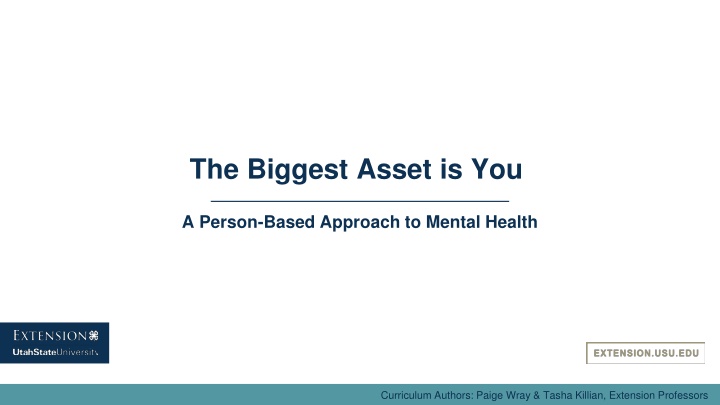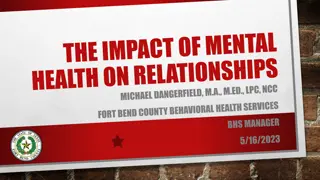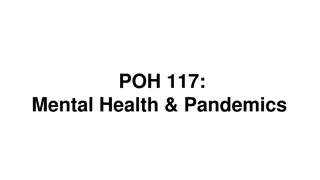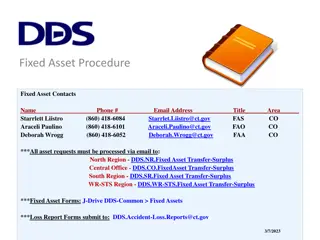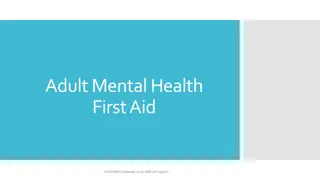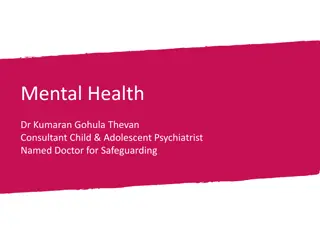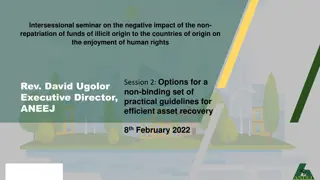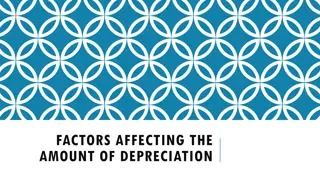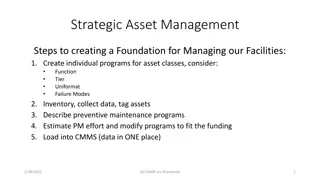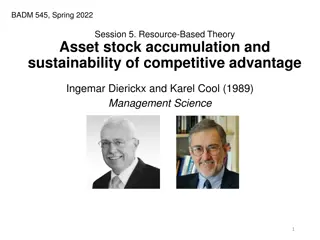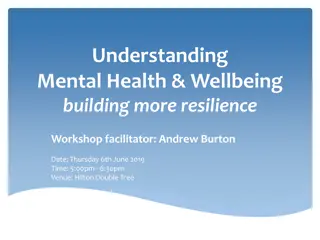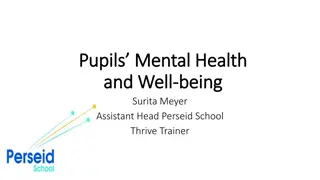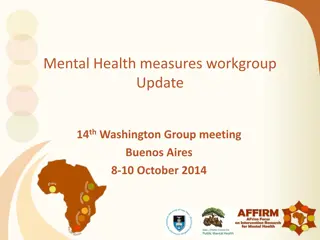The Biggest Asset is YOU: A Person-Based Approach to Mental Health Curriculum
Explore how rural living impacts mental health, understand signs and symptoms of mental health issues, differentiate stress from mental illness, and gain insights into training on stress, anxiety, depression, and suicide response.
Download Presentation

Please find below an Image/Link to download the presentation.
The content on the website is provided AS IS for your information and personal use only. It may not be sold, licensed, or shared on other websites without obtaining consent from the author.If you encounter any issues during the download, it is possible that the publisher has removed the file from their server.
You are allowed to download the files provided on this website for personal or commercial use, subject to the condition that they are used lawfully. All files are the property of their respective owners.
The content on the website is provided AS IS for your information and personal use only. It may not be sold, licensed, or shared on other websites without obtaining consent from the author.
E N D
Presentation Transcript
The Biggest Asset is You A Person-Based Approach to Mental Health Curriculum Authors: Paige Wray & Tasha Killian, Extension Professors
The Biggest Asset is YOU. If he had a piece of machinery he was working on in his shop fall and break his leg, and pin him under it, he d call a neighbor to come with his big loader and lift the machine up to free him. He d call his wife to get an ambulance coming. He d call family or helpers to take over while he went for medical care. But in the midst of a financial, marital, or emotional crisis, he could be paralyzed from calling for help. -Brad Nelson
Why? 20% of the nation s population lives in rural areas Greater isolation Elevated stress levels Community mentality - 1 person gaining knowledge is 1 more person who can help
Signs & Symptoms of MH Issue Physical Head aching, tense/aching muscles, fatigue, low energy Emotional Irritable, withdrawn, difficulty concentrating, frustration or anger, feeling hopeless Behavioral Easily angered, sleep troubles, overeating or loss of appetite, increased use of drugs and/or alcohol Relationships Conflict, strained interactions, avoiding others, hard time communicating
Stress vs Mental Health Illness Stress Mental Health Illness Specific reaction to stress that originates internally Diagnosable by a professional Response to an external cause Manageable with coping skills Can be positive Everyone has stress Self-treated 27% of adults experience the onset of a mental health illness each year, but less than 25% of adults each year seek treatment for mental health.
Training Overview & Understanding Stress Mental Illness Anxiety Depression Suicide Responding to Suicide Resources
Mental Illness in Everyday Life Which illnesses deal with mental health? Severe Asthma Moderate Depression Epilepsy Non-invasive Breast Cancer Uncomplicated Diabetes Low Back Pain Severe PTSD Severe Vision Loss Severe Depression Severe Dementia Severe Schizophrenia Paraplegia
Mental Illness in Everyday Life Severe Asthma Moderate Depression Epilepsy Non-invasive Breast Cancer Uncomplicated Diabetes Low Back Pain Severe PTSD Severe Vision Loss Severe Depression Severe Dementia Severe Schizophrenia Paraplegia
How to Help Your Role Ask Ask how someone is doing, how you can help, if you can help, what they may be going through Respond Respond to them appropriately, delving further into what may be happening, calling appropriate services, following up as necessary Connect Connect them to resources, helps, and others so there is a plan for how they will receive help
Resources Primary Care Physician Mental Health Professionals MHFA Curriculum https://www.nimh.nih.gov/health/publications/stress/index.shtml Thenationalcouncil.org/providers/ Crisis Text Line Text HOME to 741741 National Suicide Prevention Lifeline 1-800-273-8255 (TALK) FarmAid
Resources www.farmstress.us (ag wellness website) UTAC (Utah Talks, Answers, & Connects) Grant Partnership with UDAF Ag Wellness Podcast Continued Research and Resources Email Jacob.hadfield@usu.edu or josh.Dallin@usu.edu
